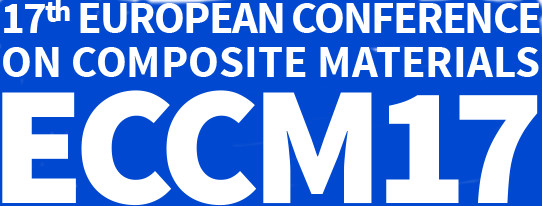

App-Einstellungen:
MICROMECHANICS AS A VIRTUAL TESTING TOOL TO UNDERSTAND DAMAGE BEHAVIOURS OF CONTINUOUS FIBRE-REINFORCED THERMOPLASTIC COMPOSITES
Ditho Pulungan (King Abdullah University of Science and Technology (KAUST)) Gilles Lubineau (King Abdullah University of Science and Technology (KAUST)) Arief Yudhanto (King Abdullah University of Science and Technology (KAUST)) Recep Yaldiz (SABIC T&I Corporate Research & Development, Composites) Warden Schijve (SABIC T&I Corporate Research & Development, Composites)
We used a micromechanical model to predict damages in thermoplastic composites and to understand their controlling parameters. We found that the ductility of the composite is mainly affected by inter-fibre distance rather than matrix ductility.
MICROSCALE MODELING OF PAPER
Yujun Li (RWTH Aachen Univeristy) Scott Stapleton (University of Massachusetts Lowell) Stefanie Reese (RWTH Aachen University) Jaan-Willem Simon (RWTH Aachen University)
This study aims to predict the mechanical properties of the paper layer by using a three-scale approach. The homogenization was performed first on the fiber wall level, and then on the generated artificial fiber network.
MODELLING AND QUANTIFYING MODE I INTERLAMINAR FRACTURE IN PARTICLE-TOUGHENED CFRP MATERIALS
Gregor Borstnar (University of Southampton) Mark Mavrogordato (University of Southampton) Mark Kazakov (UVICOM Co.Ltd) Qingda Yang (University of Miami) Ian Sinclair (University of Southampton) Mark Spearing (University of Southampton)
Computed Tomography was used to capture Mode I delamination propagation in particle-toughened carbon/epoxy laminates. Digital Volume Correlation was used to quantify the strains ahead of the crack tip, which were compared to a plane strain FE model.
MULTI-SCALE SIMULATIONS OF LARGE SCALE FIBER BRIDGING IN MODE I INTRA-PLY FRACTURE.
Luis Pablo Canal Casado (Ecole Polytechnique Fédérale de Lausanne) Georgios Pappas (EPFL) John Botsis (Ecole Polytechnique Fédérale de Lausanne)
An embedded cell simulation approach is used to study the toughening due to bridging in a unidirectionally reinforced carbon/epoxy composite in mode I intralaminar fracture.
ON THE INTER-FIBRE FAILURE IN FIBRE REINFORCED COMPOSITES
Paolo Andrea Carraro (University of Padova) Marino Quaresimin (University of Padova) Michele Zappalorto (University of Padova)
The competing mechanisms of debonding and matrix failure are treated with an analytical approach. It is shown that there exists a value of the fibre radius which discerns between a matrix and interface driven damage initiation.
PROGRESSIVE FAILURE ANALYSIS OF STATIC COMPRESSION OF FILLED-HOLE STRUCTURE BASED ON THE MICRO-MECHANICS OF FAILURE
Hongneng Cai (Xi'an Jiaotong University) Fei Jiao (Xi'an Jiaotong University) Pengfei Yu (Xi’an Jiaotong University) Xiaofei Lou (Xi’an Jiaotong University)
The static strength of filled-hole compressive (FHC) structure of polymer composites using the theory of micro-mechanics of failure (MMF) is analyzed.
PROPAGATION OF A TRANSVERSE CRACK INSIDE THE INTERLEAF OF A CROSS-PLY LAMINATE
Valentin Priasso (Airbus Group Innovations) Jacques Lamon (CNRS) Pierre Ladevèze (ENS Cachan) Cuong Ha-Minh (Université Paris-Saclay) Caroline Petiot (Airbus Group Innovations)
This study focuses on the propagation of a transverse crack, for a cross-ply laminate, inside the interleaf reinforced by thermoplastic particles. Trends in crack propagation were anticipated depending on main properties of the matrix and particles.
STRESS REDISTRIBUTION AROUND BROKEN FIBRES AND STRENGTH OF FIBRE BUNDLES
Luc St-Pierre (Imperial College London) Silvestre Pinho (Imperial College London)
Analytical and FE methods were used to analyse how stress redistribution varies with the number of broken fibres in a cluster. A FE model to predict the survival probability of microcomposites is also presented and validated against experiments.
MICROMECHANICS OF DAMAGE EVOLUTION DURING LONGITUDINAL LOADING IN UD-FRPS WITH VARIABLE STRENGTH DISTRIBUTION ALONG FIBER LENGTH
Nithin Parambil (Indian Institute of Science) K. M. P. Fathima (Indian Institute of Science) Suhasini Gururaja (Indian Institute of Science)
A numerical framework for damage development in micro-scale UD-FRP composite with continuous fibers has been presented in this work. Multiple damage modes, viz., fiber breakage, matrix plasticity and fiber-matrix interface debonding has been simulate.
THE EFFECT OF CARBON NANOTUBES ON STRESS REDISTRIBUTION AROUND THE FIBRE BREAK
Oksana Shishkina (KU Leuven) Valentin Romanov (KU Leuven) Yasmin Abdin (KU Leuven) Stepan Lomov (KU Leuven) Larissa Gorbatikh (KU Leuven)
This work is a numerical study to evaluate the influence of carbon nanotubes (CNTs) on the stress build-up in and around a broken fibre in a single carbon fibre/epoxy composite. The studied modifications on the fibre surface are CNT growth and sizing.
